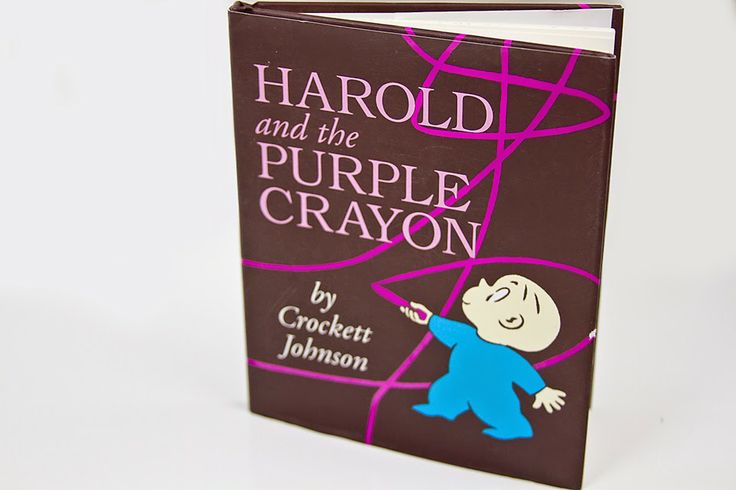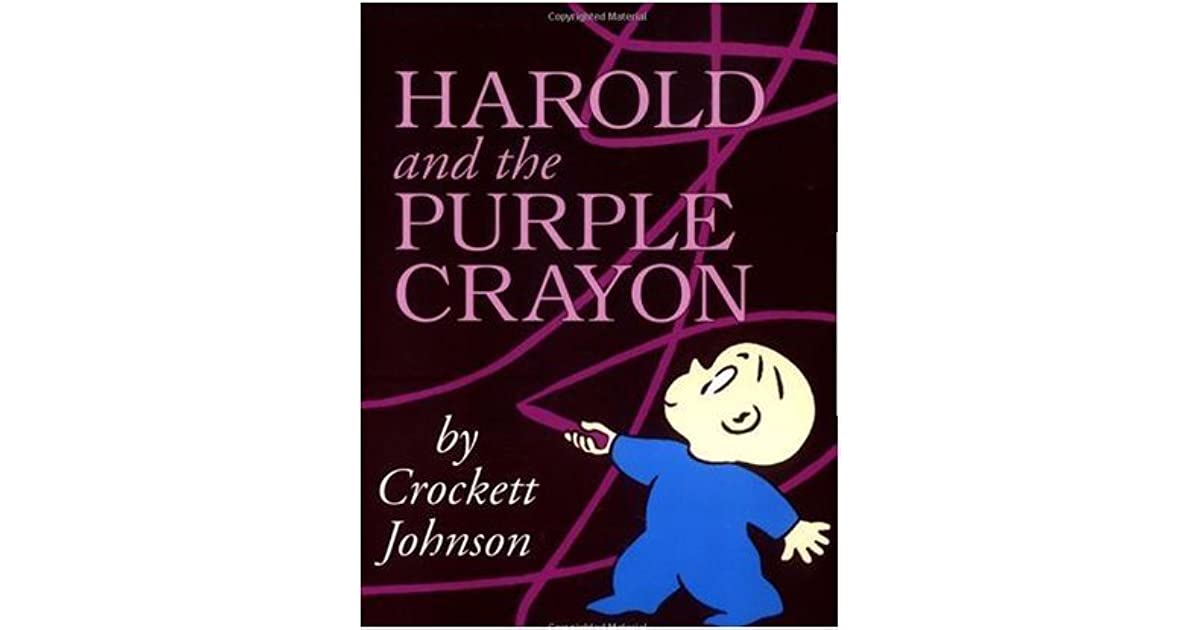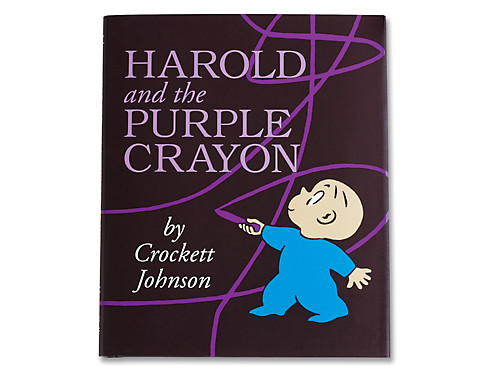Are you familiar with the children’s book “Harold and the Purple Crayon”? This charming tale follows the adventures of a little boy named Harold who carries a purple crayon with him wherever he goes. But what does the purple crayon symbolize in the story? And what age group is this book best suited for? Additionally, did you know that the color purple has significant literary and historical significance? This color has been used to symbolize many things throughout history, including royalty and luxury. Speaking of purple symbolism, have you read “The Color Purple” by Alice Walker? This novel explores themes of racism, sexism, and abuse, and teaches important lessons about resilience and self-love. So why does the main character, Celie, write letters to God throughout the novel? Let’s dive into these intriguing topics and learn more!
Discovering the Magical World of Harold and His Purple Crayon.
Harold and the Purple Crayon is a classic children’s book that tells the story of a young boy named Harold who has a vivid imagination and a trusty purple crayon. The book is about Harold’s adventures as he takes a walk through a world that he creates with his imagination. As Harold walks, he encounters many obstacles and problems that he solves with his purple crayon. He draws everything from a moon to a boat to a pie, and his drawings come to life.
The story is told in a simple and straightforward way, making it easy for children to understand and follow along. The illustrations are minimalistic, with only Harold and his drawings appearing on the pages. This allows children to focus on the story and the adventures of Harold.
One of the main themes of the book is the power of imagination. Harold’s purple crayon symbolizes his imagination, and it allows him to create a world that he can interact with. The book encourages children to use their imaginations and think creatively, as Harold does.
Harold and the Purple Crayon is suitable for children aged 4-8 years old. The book’s simple language and minimalistic illustrations make it ideal for young children who are just starting to read.
In conclusion, Harold and the Purple Crayon is a delightful children’s book that encourages imagination and creativity. Harold’s adventures with his purple crayon are sure to capture the hearts and imaginations of children for generations to come.

🍿 Must Read What is the message behind Everything Everywhere All at Once?
The Significance of the Purple Crayon in the Story of Harold.
In the children’s picture book “Harold and the Purple Crayon,” the purple crayon is a symbol of adventure. Author Crockett Johnson’s choice of color was intentional, as he believed that purple represented the unknown and the limitless possibilities of imagination. The crayon serves as a tool for the main character, Harold, to create his own world and go on exciting adventures. It allows him to draw whatever he desires and explore his own imagination. This use of the purple crayon encourages children to think creatively and find their own adventures. Overall, the purple crayon in “Harold and the Purple Crayon” exemplifies the power of imagination and the endless possibilities that come with it.
For Which Age Group is Harold and the Purple Crayon Suitable?
Harold and the Purple Crayon is a classic children’s book that has been enjoyed by generations of young readers. The book is suitable for children between the ages of 4 and 7 years. It has an average rating of 4.4 out of 5 stars, which is a testament to its enduring appeal. The book has been published with an ISBN-13 number of 9780064430227 and has a product dimension of 6.02(w) x 7.50(h) x 0.22(d). The age range of 4-7 years is an important consideration when choosing books for children as it ensures that the content is developmentally appropriate for the target audience. In this case, the book’s simple and imaginative storyline, combined with its colorful illustrations, captures the attention of young readers and encourages them to use their own imaginations. Overall, Harold and the Purple Crayon is a must-read for children in the 4-7 age range, and a great addition to any child’s library.

The Symbolic Importance and Meaning of the Color Purple in Literature
Purple has been used in literature for centuries and carries a lot of significance. It is a color that is often associated with royalty and luxury. In the book, “Harold and the Purple Crayon,” the purple crayon symbolizes the power of imagination and creativity. Harold, the young protagonist, uses his purple crayon to create his own world, where he can go on adventures and explore his surroundings. The color purple also symbolizes bravery, as seen in Alice Walker’s book, “The Color Purple.” The protagonist, Celie, overcomes many obstacles and hardships, eventually gaining the courage to stand up for herself and others. Purple is also associated with spirituality and is often used in religious texts to represent divinity.
In addition to its symbolic meanings, purple has a rich history in literature. In ancient times, purple dye was rare and expensive, primarily used for royalty and the wealthy. This made it a symbol of power and status. In fact, in ancient Rome, only the emperor was allowed to wear purple clothing. Over time, purple became associated with creativity and individuality, leading to the rise of the “purple prose” style of writing in the 19th century.
Overall, the literary significance of purple is vast and varied. It is a color that represents bravery, spirituality, and luxury, and has been used in literature for centuries to convey these meanings. Whether it’s a children’s book or a classic novel, the color purple holds a special place in the literary world.
>> Related – What was the point of Mr. Harrigan’s phone?
The Symbolic Significance of the Color Purple in History
Purple has been a symbolic color throughout history, representing wealth, power, and luxury. The rarity of purple dye made it a precious commodity, which only the elite could afford. The color was associated with nobility and regality, and it was reserved for the most important people in society. In ancient Rome, for instance, only the emperor and his family were allowed to wear purple clothing.
The production of purple dye was a laborious and expensive process. It was obtained from the murex snail found in the Mediterranean Sea. The dye was extracted from the snail’s glands and had to be treated with special chemicals to develop the vibrant purple hue. Due to the difficulty of producing the dye, it was highly valued and became a status symbol for the wealthy.
The association of purple with royalty and luxury has carried over to modern times. It is still a color that is often used to convey elegance and sophistication. From clothing to home decor, purple is a popular choice for those who want to create a luxurious and regal atmosphere.
In literature, purple is often used symbolically to represent wealth, power, and nobility. In “Harold and the Purple Crayon,” the color purple represents the limitless possibilities of the imagination. In “The Color Purple,” the color is used to symbolize the pain and suffering experienced by the protagonist, Celie. The color purple is a powerful symbol that has been used throughout history to convey a sense of grandeur and importance.
Exploring the Themes of The Color Purple by Alice Walker: A Brief Overview.
The Color Purple is a novel written by Alice Walker, which revolves around the life of Celie, the protagonist of the story. The book is set in the early 1900s and explores the themes of racism, sexism, and gender roles prevalent in the society of that time. The story begins with Celie, a young African-American girl, who is forced to live with her abusive father after her mother falls sick. Celie’s father sexually abuses her, and she becomes pregnant twice, but her father gives away her children.
The novel depicts the struggles and hardships of Celie’s life as she tries to overcome the oppression and abuse she faces. Throughout the story, Celie finds solace in writing letters to God, which serve as a means of catharsis for her. The letters also provide an insight into Celie’s thoughts and emotions, which she is unable to express otherwise.
As the story progresses, Celie meets Shug Avery, a famous blues singer, and the two women develop a deep and meaningful relationship. Shug helps Celie gain the confidence to stand up against the abuse she has faced and encourages her to pursue her dreams. The Color Purple is a story of hope, resilience, and the power of human connection. It teaches us that even in the darkest of times, there is always a way to find light and that love and support can help us overcome even the toughest challenges.

The Meaning and Significance of “The Color Purple”: Lessons to be Learned
The Color Purple by Alice Walker is a powerful novel that tells the story of Celie, a young black girl who is subjected to years of abuse and oppression. Throughout the novel, Celie goes through a journey of self-discovery and learns some important life lessons. One of the most significant lessons that Celie learns is the importance of self-love. Celie had been conditioned to believe that she was unworthy of love and respect, but through her relationships with other characters in the novel, she learns that she is deserving of love and that loving herself is the first step towards a fulfilling life.
In the novel, Celie is shown love and kindness by various characters, including Shug Avery, who becomes a close friend and lover, and Sofia, who teaches Celie how to stand up for herself. Through these relationships, Celie learns that she is not a worthless person, but rather a valuable human being who deserves love and respect. This realization helps Celie to gain the confidence she needs to face her fears and overcome the challenges that come her way.
Another lesson that Celie learns throughout the novel is the importance of forgiveness. Celie has endured years of abuse and has been betrayed by those closest to her. However, she learns that everyone makes mistakes and that forgiveness is a powerful tool for healing. By forgiving those who have wronged her, Celie is able to let go of the pain and anger that has been holding her back.
In conclusion, The Color Purple is a powerful novel that teaches some important life lessons. Through the character of Celie, readers see the transformative power of self-love and forgiveness. The novel reminds us that everyone is deserving of love and that forgiveness is a powerful tool for healing and growth.
The Significance of Celie’s Letters to God.
In Alice Walker’s Pulitzer Prize-winning novel, The Color Purple, the protagonist Celie writes letters to God, pouring out her soul in a desperate attempt to find solace and understanding. Celie’s life has been marked by tragedy and abuse, starting from a young age when she was raped by her own father and later forced to bear his children. The knowledge of these horrific events weighs heavily on her, and she has no one to turn to for help or guidance.
Writing to God serves as a form of therapy for Celie, allowing her to express her deepest thoughts and emotions without fear of judgment or retribution. In her letters, she shares her struggles with faith and religion, questioning why a loving God would allow such terrible things to happen to her and those she loves.
Celie’s letters also serve as a record of her growth and transformation throughout the novel. As she gains strength and independence, her letters become more assertive and confident. She starts to question the patriarchal society she lives in and the way women are treated as second-class citizens.
Overall, Celie’s letters to God are a powerful symbol of hope and resilience in the face of adversity. They show how even in the darkest of times, we can find strength and solace in faith and in our own inner voices.
More to discover
Harold and the Purple Crayon is a delightful children’s book that encourages young readers to use their imagination and creativity. The purple crayon symbolizes the power of a child’s imagination and their ability to create their own world. This book is suitable for children of all ages and is a timeless classic that continues to inspire generations. The literary significance of purple in both Harold and the Purple Crayon and The Color Purple is a testament to its symbolism of creativity, imagination, and spirituality. The Color Purple teaches valuable lessons about love, forgiveness, and the power of sisterhood. Celie’s letters to God demonstrate the importance of having a source of guidance and strength during difficult times. Overall, both of these books are powerful and thought-provoking works of literature that continue to captivate audiences today.
